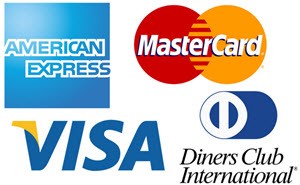Card issuers & Credit card networks
The credit card network facilitates the payment process between credit card holders, merchants, and credit card issuers. Two examples of well known credit card networks are Visa and MasterCard. The owner of a credit card network set the terms for transactions within the network, e.g. when it come to fraud liability.
 The credit card issuer extends a line of credit to the credit card holder, from which the card holder can pay merchants and make cash withdrawals. The credit card holder must then repay the debt to the issuer. The typical credit card issuer is a bank or credit union. Examples of major credit card issuers on the U.S. market are Chase, Bank of America, Wells Fargo, U.S. Bank, Citibank, and Capital One. Since the credit card issuer is the one extending credit, the credit card issuer determines the interest rate for the credit card debt.
The credit card issuer extends a line of credit to the credit card holder, from which the card holder can pay merchants and make cash withdrawals. The credit card holder must then repay the debt to the issuer. The typical credit card issuer is a bank or credit union. Examples of major credit card issuers on the U.S. market are Chase, Bank of America, Wells Fargo, U.S. Bank, Citibank, and Capital One. Since the credit card issuer is the one extending credit, the credit card issuer determines the interest rate for the credit card debt.
Consumers sometimes get confused about the distinction between a credit card issuer and a credit card network, and one of the reasons behind this confusion is probably the fact that two of the largest card networks in the United States – American Express and Discover – issues their own credit cards. So, if you have a Discover credit card, it is issued directly by the Discover Bank and not by any independent bank or credit union.
Which credit card network your credit card is included in will determine where you can use the credit card. Most merchants that accept credit cards will display a sign that shows exactly which credit card networks this merchant is connected to. Which bank or credit union that issued the credit card is not really important in this regard.
I have a problem with my bill, who should I contact?
If you have any questions regarding your credit card bill, your first point of contact should be the credit card issuer, not the credit card network. This means that if you have a Visa card issued by U.S. Bank you should contact U.S. Bank if you want to ask something regarding your bill. With an American Express credit card, you contact American Express, since they are both the card issuer and owner of the card network. With a Discover credit card, your contact Discover, since they are both the card issuer and owner of the card network.
Some areas are the responsibility of the credit card network rather than the credit card issuer. It is for instance common that the credit card network handles issues regarding fraud liability, travel insurance, auto rental insurance, and extended warranties for purchases.
Who is may credit card issuer?
The name of the issuer is usually prominently displayed on both the front side and the back side of a credit card. A notable exception is co-branded cards, where the name of the organization with which they are associated tends to be the name most prominently featured on the credit card. The issuers name is still on the card somewhere, but you may have to look closer to find it than you would need on a standard not co-branded credit card.
